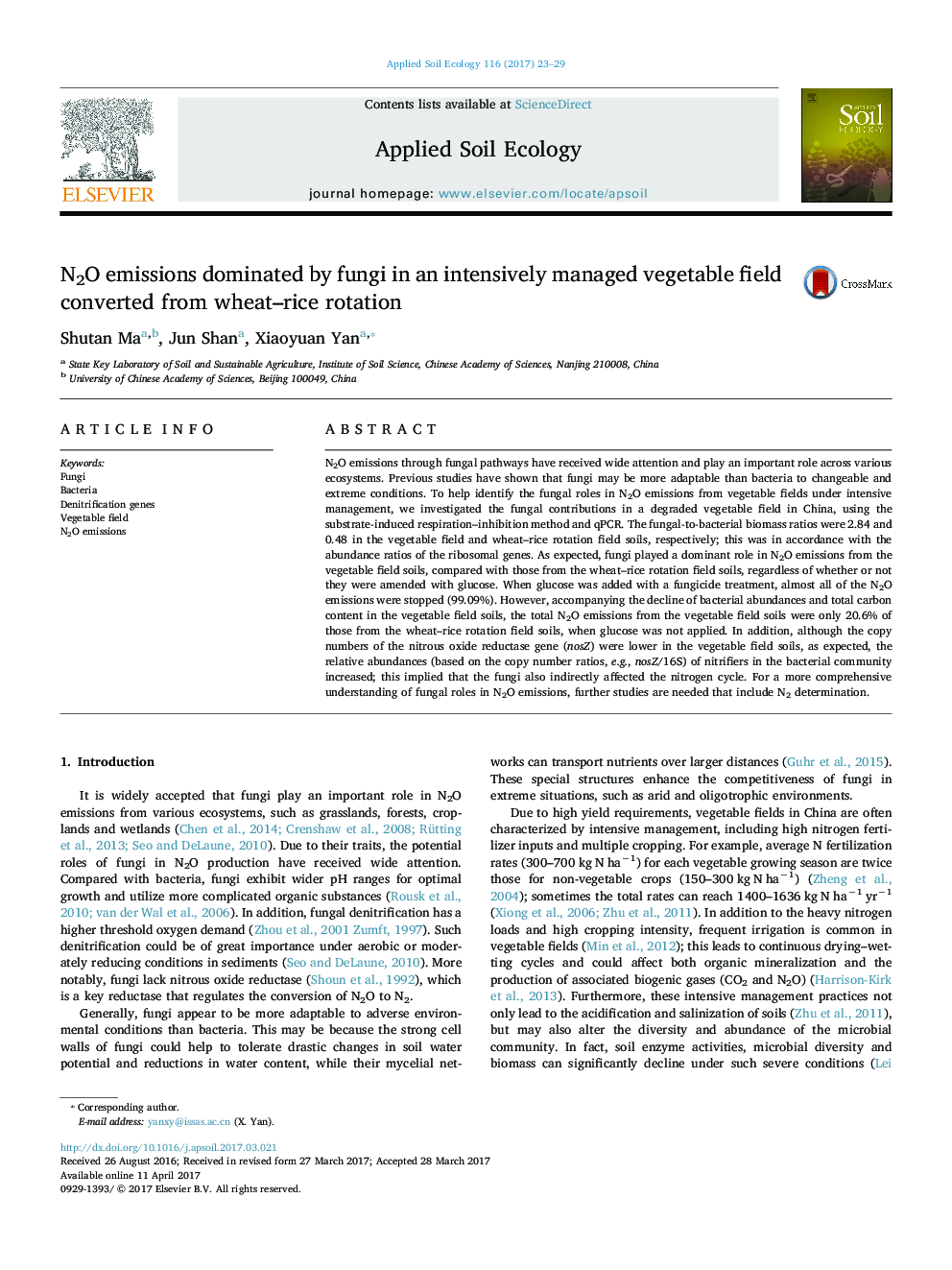| کد مقاله | کد نشریه | سال انتشار | مقاله انگلیسی | نسخه تمام متن |
|---|---|---|---|---|
| 5742695 | 1617767 | 2017 | 7 صفحه PDF | دانلود رایگان |
- The effects of vegetable cultivation on N2O emissions from microbes were studied.
- Intensive farming altered the fungal to bacterial ratio in the vegetable field.
- Fungi dominated N2O emissions in the vegetable field.
- The organic carbon content may affect the fungal contribution to N2O emissions.
- Fungi may indirectly affect the bacterial denitrifier community.
N2O emissions through fungal pathways have received wide attention and play an important role across various ecosystems. Previous studies have shown that fungi may be more adaptable than bacteria to changeable and extreme conditions. To help identify the fungal roles in N2O emissions from vegetable fields under intensive management, we investigated the fungal contributions in a degraded vegetable field in China, using the substrate-induced respiration-inhibition method and qPCR. The fungal-to-bacterial biomass ratios were 2.84 and 0.48 in the vegetable field and wheat-rice rotation field soils, respectively; this was in accordance with the abundance ratios of the ribosomal genes. As expected, fungi played a dominant role in N2O emissions from the vegetable field soils, compared with those from the wheat-rice rotation field soils, regardless of whether or not they were amended with glucose. When glucose was added with a fungicide treatment, almost all of the N2O emissions were stopped (99.09%). However, accompanying the decline of bacterial abundances and total carbon content in the vegetable field soils, the total N2O emissions from the vegetable field soils were only 20.6% of those from the wheat-rice rotation field soils, when glucose was not applied. In addition, although the copy numbers of the nitrous oxide reductase gene (nosZ) were lower in the vegetable field soils, as expected, the relative abundances (based on the copy number ratios, e.g., nosZ/16S) of nitrifiers in the bacterial community increased; this implied that the fungi also indirectly affected the nitrogen cycle. For a more comprehensive understanding of fungal roles in N2O emissions, further studies are needed that include N2 determination.
Journal: Applied Soil Ecology - Volume 116, August 2017, Pages 23-29
